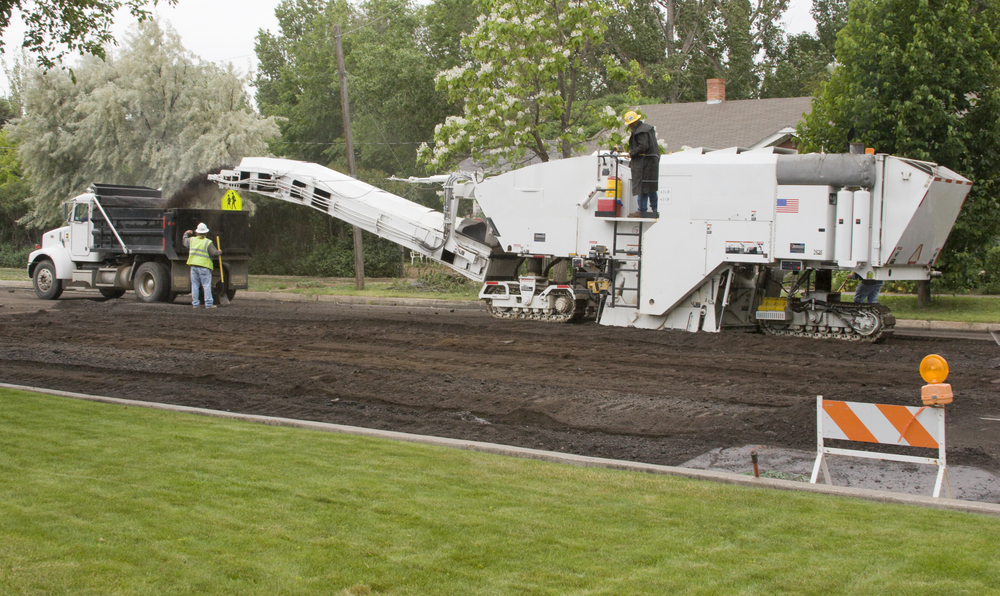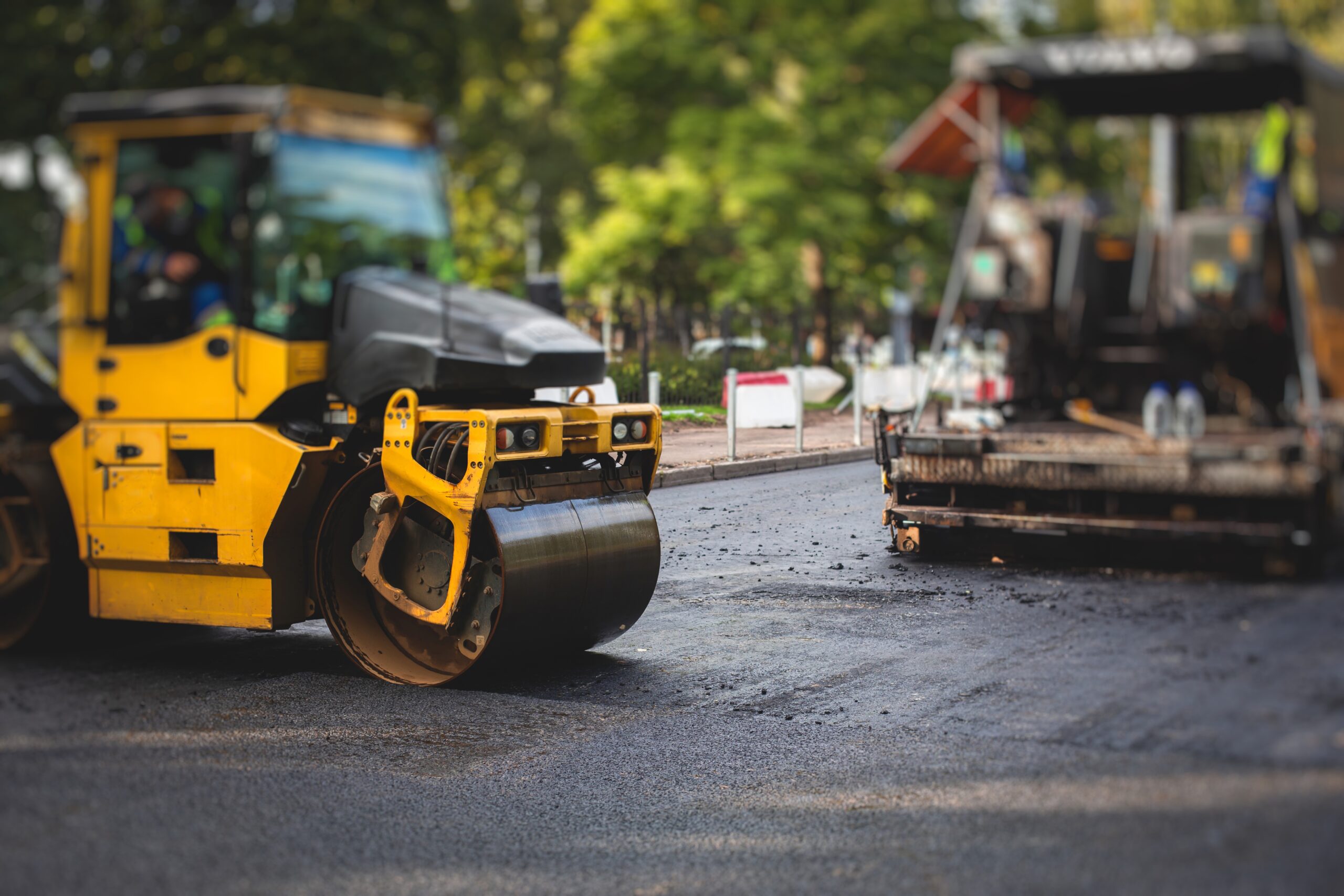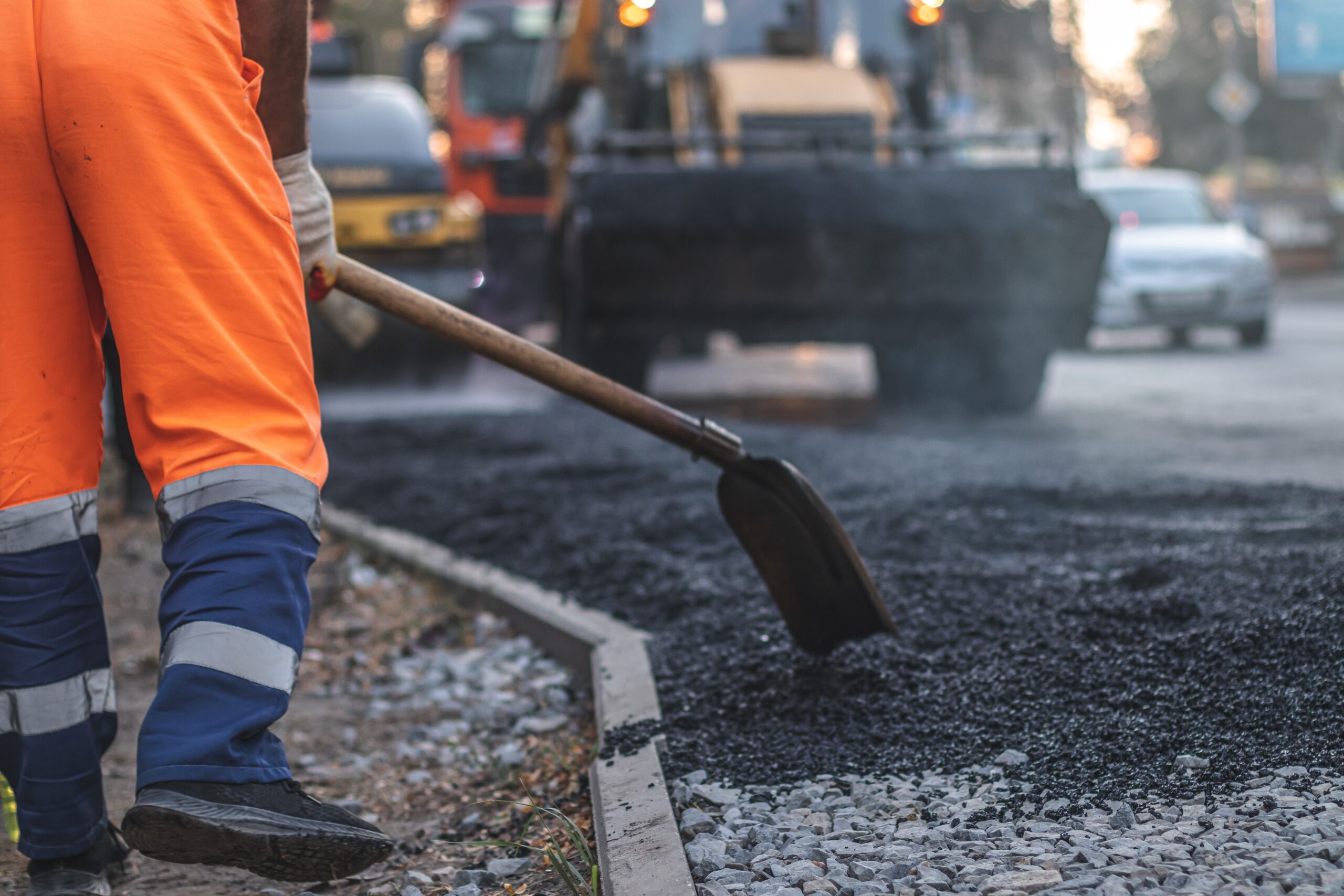
Choosing the right solution for deteriorating asphalt can be the difference between a short-term patch and long-lasting pavement performance. While complete surface replacement may seem like the obvious fix for damaged asphalt, asphalt milling is often the more brilliant, faster, and more cost-effective choice, especially when the subbase remains in good condition. This article examines the specific scenarios where milling outperforms full-depth replacement, enabling you to make informed, budget-friendly decisions for your pavement needs.
Understanding the Two Options
Before we delve into which approach is better than the other, it’s essential to understand what each process entails and how they’re used in commercial and municipal paving.
What Is Asphalt Milling?
Asphalt milling, or cold planning, is a surface treatment process that involves grinding away the top layers of an asphalt surface without disturbing the underlying structure. It’s designed to remove surface-level defects while creating a smooth, compactable foundation for a new asphalt overlay.
What Is Full Surface Replacement?
In contrast, complete surface replacement involves removing all layers of asphalt, including damaged subbase materials, and reconstructing the entire pavement system from scratch. This method is best suited for areas with severe structural issues.
When Milling Is the Ideal Choice
Now that we’ve defined both methods, let’s break down the specific conditions where asphalt milling is the superior option.
Surface-Level Damage Only
When cracks, minor rutting, or surface wear appear but have not penetrated to the foundation, milling asphalt is often the best solution. It removes the topmost layer of compromised asphalt and prepares the surface for a fresh overlay without the need to rebuild from the ground up.
Stable and Sound Base
If the underlying base is strong, intact, and free of moisture-related damage or structural weakness, there’s no need for full-depth replacement. Milling allows you to address just the surface while preserving the integrity of the base.
Budget-Friendly for Property Owners
Milling typically requires less labor, fewer materials, and less time than full replacement, resulting in lower costs. In many cases, this method can be up to 50% less expensive while still delivering long-lasting results.
Minimal Downtime and Disruption
Unlike complete replacement, which can require several days or even weeks, asphalt milling and overlay projects are often completed in one to two days. This makes milling a practical choice for active commercial properties that need to remain accessible during repairs.
Eco-Friendly and Sustainable
Recycled Asphalt Pavement (RAP), the byproduct of milling, is reused in new paving projects. This significantly reduces landfill waste, lowers emissions from material production, and makes milling an environmentally responsible option.
Extended Lifespan for Existing Pavement
When a quality overlay is applied after milling, the pavement can experience 10–17 years of additional performance. This is a smart way to prolong the use of a structurally sound asphalt surface without committing to a complete reconstruction.
When Full Surface Replacement Is Necessary
While milling has many advantages, it’s not suitable for every situation. In some instances, a complete rebuild is the only way to restore structural integrity and safety.
Let’s explore the conditions that make complete surface replacement the preferred route.
Severe Structural Damage
If the pavement shows signs of alligator cracking, deep potholes, or widespread base failure, milling only addresses the symptoms, not the root cause. A complete removal and replacement of the base and asphalt is required.
Widespread Damage Across the Surface
When 30% or more of the pavement area is compromised, especially with interconnected or deep cracks, milling becomes a temporary fix. Rebuilding ensures long-term durability and reduces the need for frequent repairs.
Pavement Is Too Thin or Too Old
Older lots with a thin asphalt layer or multiple overlays may no longer be able to support traffic loads. Complete surface replacement enables a new, properly engineered pavement structure that can effectively handle the demands of usage.
Drainage or Elevation Issues
Since milling maintains the current grade and slope, it does not address drainage problems. Full reconstruction offers the opportunity to redesign slopes, install proper drainage infrastructure, and prevent future water-related damage.
Comparing Milling and Full Replacement
Understanding the trade-offs between both methods helps you choose what’s best for your property. Here’s a side-by-side comparison to simplify the decision-making process.
| Feature | Milling + Overlay | Full Replacement |
| Cost | More affordable | Higher investment |
| Downtime | Minimal | Significant |
| Lifespan | 10–17 years | 20–30 years |
| Structural Repair | No | Yes |
| Drainage Correction | No | Yes |
| Environmental Impact | Lower (uses recycled asphalt) | Higher resource use |
Deciding Between the Two: Key Factors
Choosing the right approach comes down to evaluating current pavement conditions, long-term goals, and the overall budget.
Here are the factors to consider during your decision-making process.
Evaluate Pavement Damage Accurately
Start with a professional assessment to determine if surface-level repairs are sufficient. Core testing and visual inspections help identify whether damage is cosmetic or structural.
Assess Base Layer Integrity
If the base remains firm and well-drained, milling can extend the pavement’s life with minimal intervention. However, any signs of subbase movement or moisture infiltration mean that replacement is likely required.
Consider Usage and Traffic Load
Higher traffic volumes and heavier vehicle use may cause older pavement to wear out more quickly. For industrial or high-traffic areas, complete replacement might provide a better return on investment in the long term.
Think Long-Term with ROI in Mind
While milling may offer upfront savings, complete replacement provides a longer lifecycle and often requires less maintenance over time. Choose the method that aligns with your property’s usage, tenant expectations, and budget planning.
Project Scenarios: When Milling Makes Sense
To better understand how milling works in real-world situations, here are a few common scenarios where milling proves to be the better option.
Commercial Parking Lot with Surface Wear
The lot has faded striping, minor cracks, and rutting, but the subbase remains solid. Milling and overlay restore curb appeal and functionality with minimal closure time.
Apartment Complex Drive with Weather Damage
Seasonal freeze-thaw cycles have worn the surface, but the base remains intact. A 2-inch milling followed by a hot-mix overlay improves ride quality without complete replacement.
Light-Use Roadway with Mild Rutting
This road sees light-to-moderate traffic. Milling levels out the ruts, and an overlay provides a fresh, safe surface without major excavation.
Milling Best Practices for Long-Term Results
Whether you’re managing a municipal road, a commercial lot, or a private driveway, following best practices ensures the success and longevity of your milled pavement.
Use the Right Milling Depth
Depths of 1–2 inches are typically enough for surface wear, while deeper cuts (3–4 inches) may be required to remove existing overlays or moderate rutting.
Clean Thoroughly Before Overlaying
Proper surface cleaning and tack coat application are essential to ensure a strong bond between the milled surface and new asphalt.
Choose a Quality Overlay Mix
Climate-appropriate hot-mix asphalt, often modified with polymers, offers improved flexibility, particularly in freeze-prone regions such as Colorado.
Ensure Proper Compaction
Each lift of new asphalt must be compacted with high-pressure rollers to eliminate air pockets and create a dense, smooth surface.
Frequently Asked Questions
1. What depth of asphalt can be milled?
Standard milling ranges from 1 to 4 inches, depending on the severity of surface wear and the thickness of the existing pavement.
2. Can milling fix base damage?
No. Milling addresses surface-level damage only. If the subbase is compromised, complete replacement is necessary.
3. Is asphalt milling environmentally friendly?
Yes. Milled asphalt is 100% recyclable and often reused in overlays or new pavement projects, making it a sustainable option.
4. How long does a milled surface last?
With proper milling and overlaying, the pavement can last 10 to 17 years, depending on traffic volume and maintenance practices.
5. Can milling be done in winter?
Cold-weather milling is possible, but overlaying is best done in warmer months for proper compaction and curing.
Why Asphalt Milling Is a Smart Choice for Many Projects
With numerous factors to consider, it’s clear that milling offers a strategic advantage in the proper context. It’s fast, efficient, and environmentally friendly, making it an ideal choice for property owners seeking to maintain pavement performance without incurring unnecessary costs.
By choosing to mill and overlay, you’re giving your asphalt a second life without the expense and disruption of complete reconstruction.
Ready to improve your asphlat pavement without starting over? Contact Asphalt Coatings Company today for a free consultation and expert recommendations tailored to your site’s conditions.



